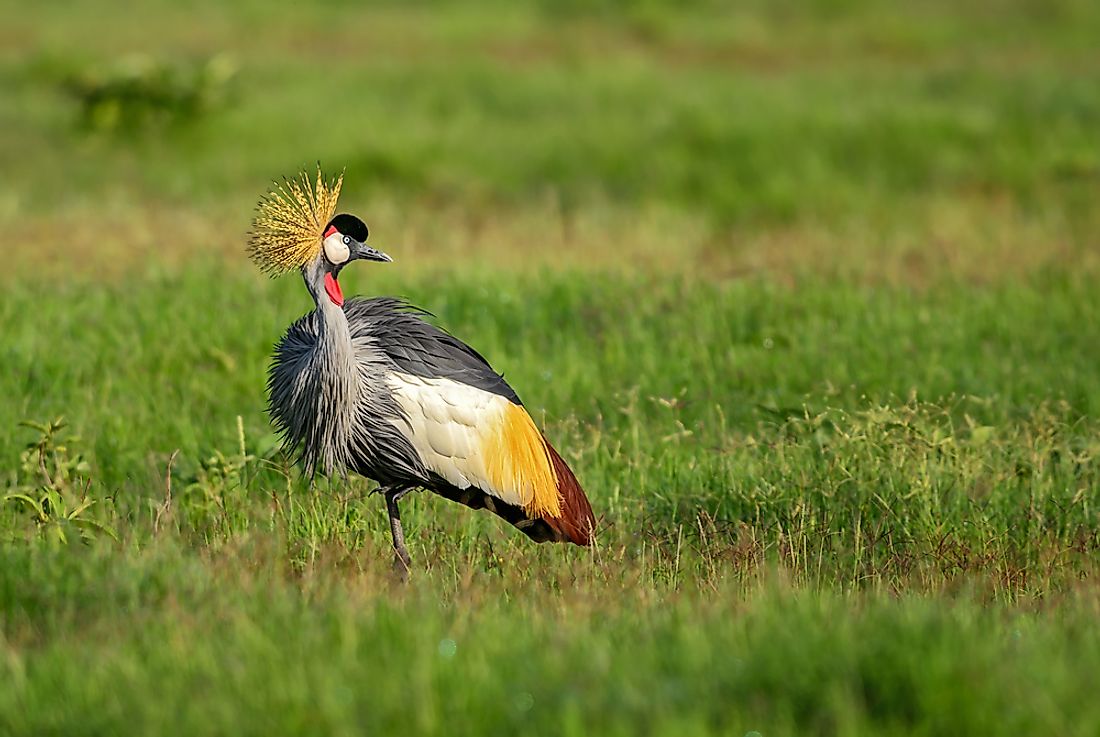What is the National Bird of Nigeria?

All the nations in the world have national symbols. These symbols include a national flag, a national anthem, or even animals and birds. In the case of Nigeria, the officially recognized national bird is the endangered black crowned crane which has the scientific name “Balearica pavonina.” Closely related to the grey crowned crane, this bird lives in Africa’s dry savannah to the south of the Sahara Desert. Other names for this bird include the dark crowned crane, the West African crowned crane, and the Sudan crowned crane. The proposition for the crane’s status as a national bird was made in 1985, although the eagle is also a national bird as well.
Habitat and Diet
Belonging to the crane family known as Gruidae, the black crowned crane lives in the dry African Savannah to the south of the Sahara Desert. More specifically, the bird is most likely found on the expansive land between Chad and Senegal. The bird is one of the two crane species that has the ability to nest in trees.
The black crowned crane, together with its close relative the grey crowned crane, prefer to inhabit wet places such as wetlands. This habitat is perfect for providing the crane with food such as insects, small mammals, and reptiles. Insects eaten include grasshoppers, millipedes, amphibians, crabs and others. Sometimes, they also eat grains and grass seeds.
Physical Characteristics
The black crowned crane has an average length of approximately 3.3 feet with a massive wingspan of around 6.2 feet. On average, the bird weighs around eight pounds with the males being larger than females. The plume of the bird ranges from a dark grey to black with white feathers at the edge of the wing. Below the chin, they have a small pouch made of red skin. The crane uses this pouch to make booming sounds. The toes and the legs are completely black. Young ones are different since their colors range from grey to brown and have a brown nape and crown.
Reproduction
As stated earlier, these birds make their nests in trees. The nests are formed haphazardly from vegetation around the habitat. The egg-laying and nesting period runs from around July until October. After that, the female, which matures after four years, lays around two to five eggs that will be incubated for a period of between 28 and 31 days. Both parents closely guard the eggs until they hatch. After that, the parents and the hatchlings live and forage together for 60 to 100 days.
Importance
The cranes fill a crucial position in the ecosystem since they help to control the number of agricultural pests. They also help to pollinate flowers and plants. In the process, the cranes help ensure that these critical marshlands and wetlands are conserved and are serving their purposes of conserving water, improving the water quality, and helping fisheries.
Conservation
Unfortunately, this bird is classified as being endangered due to excessive hunting and destruction of their habitats. Some people hunt them because of a desire for bush-meat while others do so because of the monetary value. The government has not invested enough resources to protect the bird.











